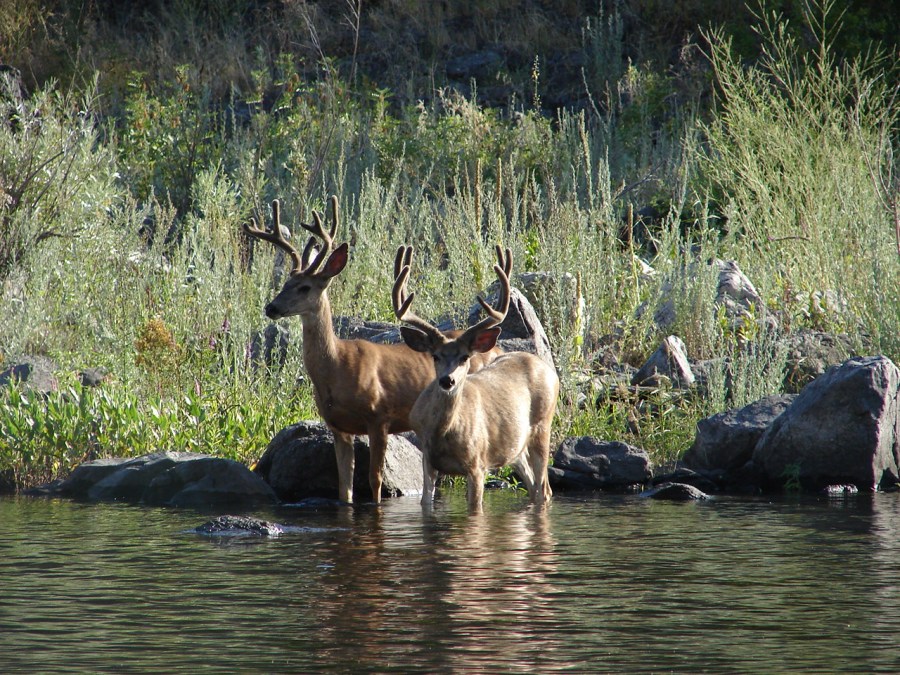PORTLAND, Ore. (KOIN) — Hunting for shedded deer and elk antlers is becoming an increasingly popular hobby, the Oregon Department of Fish and Wildlife has said.
While some “shed hunters” search for stray antlers as a means of scouting the best fall hunting spots, others collect the antlers for craft projects like chandeliers. In response to the added interest, the state has laid out a set of guidelines for people to follow for the upcoming shed hunting season.
For starters, responsible shed hunters should consider delaying their search for antlers until May or June. While many antler hunters choose to begin their season as soon as road conditions allow, the ODFW says that the early start can put added stress on wildlife.
“By late winter, big game animals aren’t finding a lot of nutritious food, and need to be conserving energy so they can migrate to summer ranges a bit later in the year,” the ODFW guidelines state. “Late winter shed hunting, especially with dogs, can stress big game animals when they are most vulnerable. Please consider delaying your shed hunting until May or June — most deer will be moving off their winter range, and you might enjoy better hunting conditions.”
Deer and elk naturally shed their antlers once a year during the winter and early spring months. Bucks typically shed their antlers between late December and March, while bulls shed from late February to early April. Once shed, the animals immediately begin growing a new set of antlers in preparation of the fall mating season.
In addition to ethical guidelines, there is also a set of official ODFW laws for shed hunting.

ODFW shed hunting rules and guidelines:
- Shed hunters can only pick up antlers that have been naturally shed by deer and elk in the wild. Antlers still attached to skulls must remain in the woods.
- Unlike deer and elk, bighorn sheep and Rocky Mountain goats do not shed their horns each year, so don’t expect to find them as “sheds.”
- You cannot keep the antlers of a deer or elk you salvage under Oregon’s new roadkill salvage law. Instead, you must surrender the antlers and head to an ODFW office within five business days of picking up the carcass.
- If you prefer to buy sheds to make handcrafted items rather than find them yourself, you’ll need a Hide/Antler permit ($34).
- Once an antler falls off it legally becomes the property of the landowner. Therefore shed hunters need to get permission from private landowners to access their property and pick up sheds.
ODFW also asks shed hunters to follow its guidelines for protecting big game animals while they recover from harsh winter months:
- Don’t disturb big game animals: Don’t approach animals or follow the same ones on a daily basis.
- Respect road and area closures. These are in place to protect winter range and wintering big game. Some ODFW wildlife areas are entirely closed to public access during late winter; other areas have road and travel restrictions.
- Don’t take vehicles off-roading. The ground is water-logged at this time of year and off-roading in the wrong place can damage critical wildlife and fish habitat. Travel by foot or horseback instead.
- Try not to be in the same spot every day. Deer and elk might need to be in that spot for food or cover, and your presence will keep them from it.
- Keep dogs under your control. Don’t let dogs approach or follow wildlife. State law prohibits dogs (and people) from harassing wildlife. (OAR 498.102 and 498.006)
- Respect private property. You always need permission to be on private land. Antlers that are shed on private land below belong to the landowner under Oregon statutes.
Many of Oregon’s wildlife areas remain closed through March as the deer and elk continue to shed their antlers. Hunters are also asked to honor winter wildlife areas and road closures.
Wildlife area closures:
- White River Wildlife Area (Wasco County) – lands north of Forest Rd 27 closed to public access Dec. 1-March 31.
- Wenaha Wildlife Area (Wallowa County) – closed to public access Jan. 1-March 31. (Access still allowed at designated camping areas, on ODFW land along the Wenaha River, and between Grande Ronde River Road and Grand Ronde River from Redmond grade bridge below Troy to the mouth of the Wildcat Creek.)
- Bridge Creek Wildlife Area (Umatilla County) – closed Dec. 1-April 14.
- Elkhorn Wildlife Area (Baker and Union Counties) – closed Dec. 1-April 10.
- Phillip W Schneider Wildlife Area (Grant County) – closed Feb. 1-April 14.
- Ladd Marsh Wildlife Area (Union County) – lands west of Foothill Rd closed Feb. 1-March 31
- Starkey Experimental Forest Enclosure (Union County) – closed Nov. 15-April 30
Motor vehicle restrictions:
- Lost River Winter Range – closed to motor vehicles Dec. 1-April 15
- Bryant Mountain – closed to motor vehicle use Nov. 1-April 15
- Tumalo Winter Range – restricted motor vehicle use Dec. 1-March 31
- Prineville Reservoir – closed to motor vehicle use Nov. 15/Dec. 1 until April 15
- Cabin Lake-Silver Lake Winter Range – closed to motor vehicle use Dec. 1-March 31
- Metolius Winter Range – restricted motor vehicle use Dec. 1-March 31
- Spring Creek Winter Range – closed to motor vehicles Dec. 15-April 30
- McCarty Winter Range – closed to motor vehicles Dec. 15-March 31
- Lost River Winter Range – closed to motor vehicles Dec. 1-April 15
